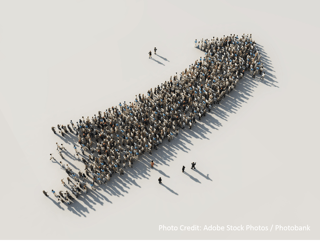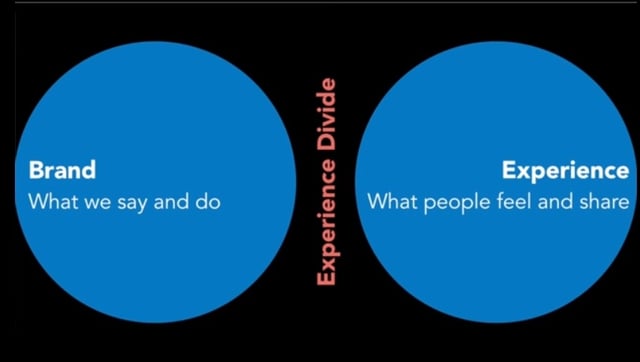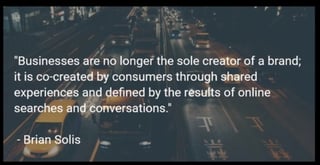 What is a brand? You’re surrounded by brand names on billboards, radio, TV, and websites, but how many do you remember? How many do you care about? How about when it comes to B2B — small tomedium-sized companies with niche products or services — how much of an impression do they make on you?
What is a brand? You’re surrounded by brand names on billboards, radio, TV, and websites, but how many do you remember? How many do you care about? How about when it comes to B2B — small tomedium-sized companies with niche products or services — how much of an impression do they make on you?
Brian Solis, principal analyst at Altimeter says, “A brand is something that’s experienced.”
When it comes to branding for logistics companies, in order to create staying power, companies need to leave an emotionally powerful impression. This impression goes well beyond how a logo looks or how many social media channels a business is on with a similar message and design. Humans — the common denominator across the board — gravitate to companies that they can make an emotional connection to. And in order to do that companies need to gain an in-depth understanding of the group of people that they’re designing this experience for.
Companies that understand what their customers need, and present themselves as that answer by providing experiences to their audience will create staying power for themselves.
To illustrate this point further, Superbowl ads and popular billboards are end products. They’re end products that successfully work to attract people because they comprise many hours of research, and this research is acted on with an experience that hits home. Branding that’s this successful goes well beyond a beautiful and consistent logo or an aesthetically pleasing website or because it’s “everywhere” online. The lead up to any successful ad or marketing campaign is inclusive of, and acts on, who a company’s buyer personas are, where and how they purchase products, and what they most want and need in their lives.Once this is determined, and experience is created just for that specific group of people — in logos, in website text, in images, in e-books, in whitepapers, in video, in ads and on social media.
What is Branding, Really?
We talk with businesses that want “branding” for their company on a relatively regular basis. They want people to resonate with their message, to be recognized and ultimately to be a company that people choose over their competition.
In this video, Brian Solis explains how businesses can architect experience in order to give power to their brands. (It starts out in French, but the actual interview is in English.) The video sums up the concept that, as human beings, we are constantly having experiences and are ever in search of new ones to give us experiences that we need and enjoy.
Experience is the “Glue” That Attracts and Binds

What is experience when it comes to branding? Experience is the emotional reaction that comes from a product or service: what it accomplishes, the process, and how it changes your life in some (oftentimes small) way.
The old-school viewpoint is to have a product, and then to look at the customer as the one that has the money. A sales funnel is created and you’re told why you should exchange your money for a product. Some people buy, and the company serves them. If the experience pleases the customer, they come back for more.
However, as Solis points out, many businesses leave the emotional experiences to chance. Either a customer likes the product or they don’t.
Engineering Experience Should Be a #1 Priority for Businesses
Because experience is so important, Solis says, engineering  experience represents the future — not only of brands but of an entire business model. He goes so far as to say that those that focus on traditional marketing that does not put the consumer as the focus will be risking their survival. He calls it “Digital Darwinism”.
experience represents the future — not only of brands but of an entire business model. He goes so far as to say that those that focus on traditional marketing that does not put the consumer as the focus will be risking their survival. He calls it “Digital Darwinism”.
The first step in engineering an experience is to see the world through the eyes of your customer. Once an in-depth understanding of this is gained, experiences can be created for the customer.
The Example of Henry Ford and Steve Jobs
With the Ford Model T, Henry Ford created an experience that no customer had ever been a part of before. It changed the way that Americans lived, worked and traveled. And that is what made his brand powerful.
During Steve Jobs’ time at Apple, the company gathered a lot of data about how customers use their products, in order to improve them. This is another case of a brand creating a unique experience for its customers. At the time they were put on the market, iPhones and Macbooks were an almost complete departure from other phones and computers. They offered such unique features that catered to what people wanted — including ease of use and ergonomics. The experience or human connection to these products was a key factor in Apple’s success. It was the culmination of the hundreds, perhaps thousands, of hours of research that went into designing a successful product. And it paid off for years to come!
And although these examples are of icons that will live on through time, doing what Apple or Ford did to even a fraction of a degree by tapping into the market that wants and needs a product or service most will produce substantial success for any company.
Study What Your Customers Want and Need
When you care about and study each customer’s wants and needs, it enables you to architect a powerful experience for them that will keep them coming back time after time.
If you have questions, contact us today at Search Strategy Marketing. We can take a deep dive into who your buyer personas are to design a strategy that includes an experience that will attract more visitors and leads and generate more sales.

